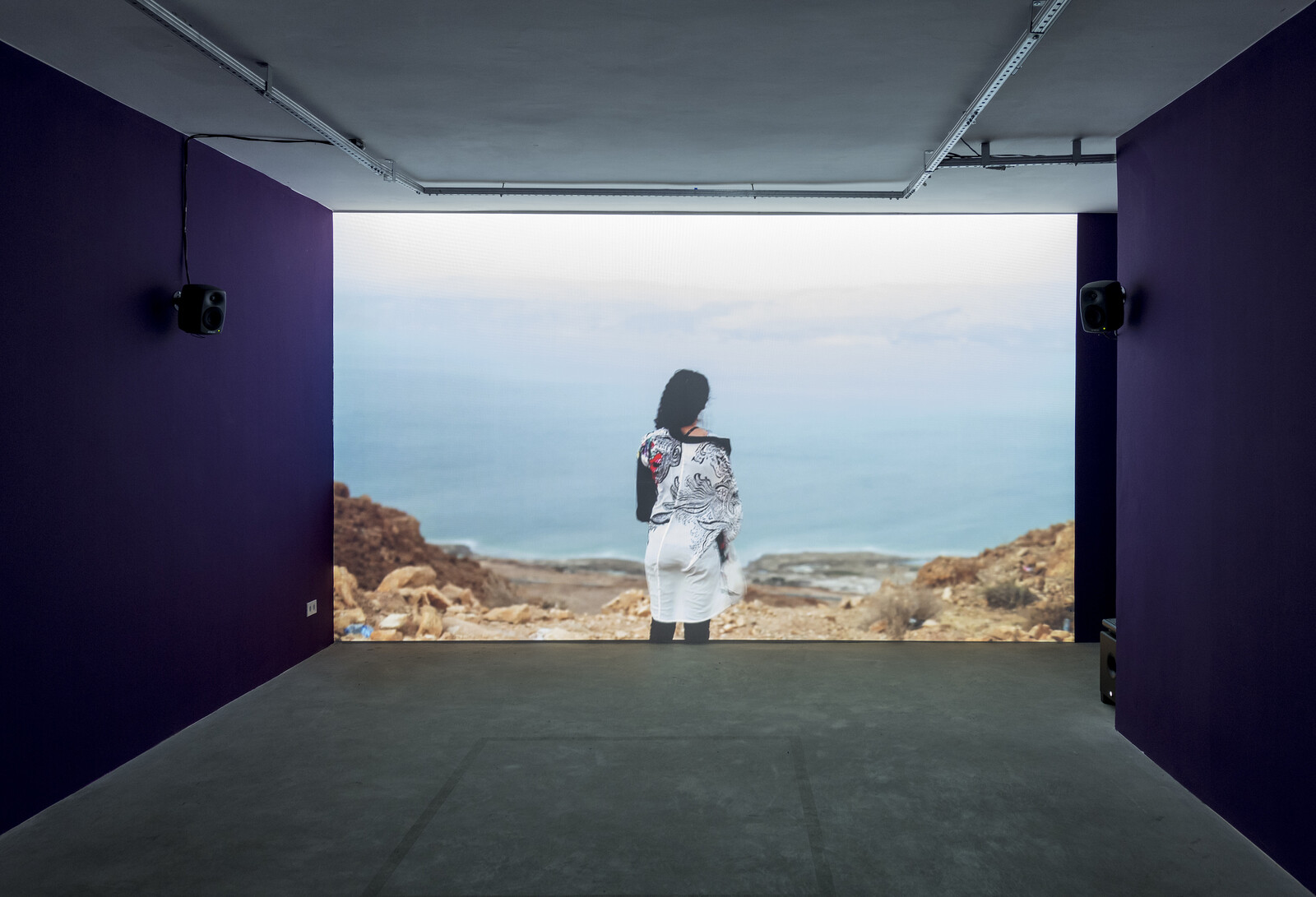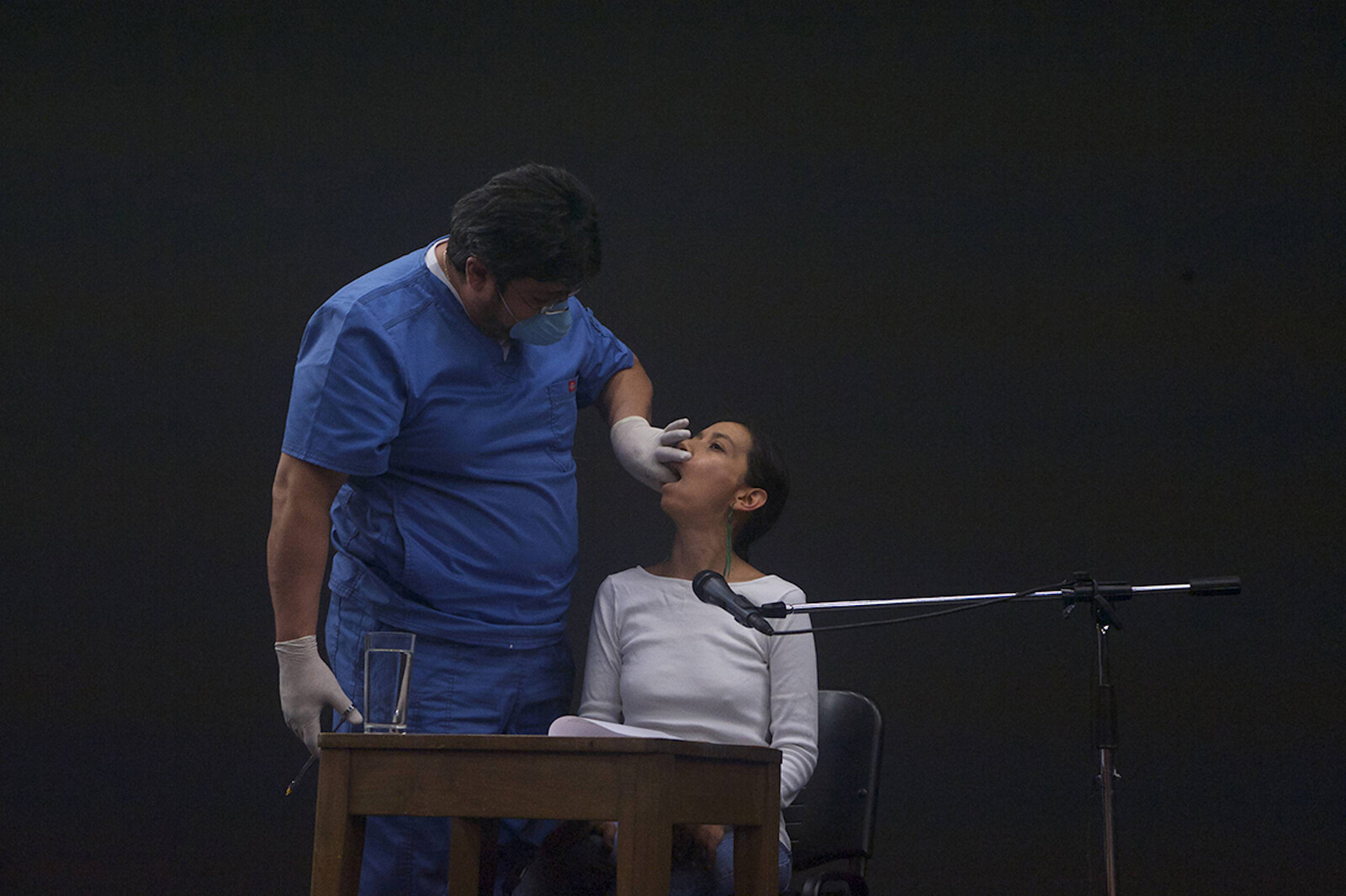Categories
Subjects
Authors
Artists
Venues
Locations
Calendar
Filter
Done
November 13, 2024 – Review
Basel Abbas and Ruanne Abou-Rahme’s “Until we became fire and fire us”
Oliver Basciano

The deep boom of a subwoofer meets you on the stairs to the small gallery. Inside, a two-channel video projected across opposite walls shows barren landscapes with figures moving through them, close-ups of plants and foliage, and more besides, the imagery by turns sped up, slowed down, color-adjusted, and layered. One half is framed to the dimensions of the space; the second is projected at an angle, so the pictures invade the ceiling and floor. It is a hypnotic, unnerving assemblage.
On the gallery floor, between the two projections of Until we became fire and fire us (2023–ongoing), stand metal barricades, like sections of a security border, on which printed frames from the film are attached. Above, sheer fabric banners hang, printed from further images culled from the video. To one side, copies of a newspaper—the New York War Crimes, mimicking the design of the New York Times—are piled up on a pair of bricks and available for the visitor to take away. It tells a century-old story of Palestinian struggle and Israeli aggression through a succession of commissioned texts.
The materiality of all this stuff is in stark contrast to the subject of the thirty-two-minute, mixed-media work that lends …
March 6, 2023 – Review
Regina José Galindo’s “Anestesia, Anistia, Amnesia”
Oliver Basciano

In 1960, angered by the deeply skewed land deals between the right-wing dictatorship and US companies such as United Fruit, a group of left-wing army officers tried to wrest control of Guatemala. They failed and over the ensuing 36 years, tacitly aided by Washington, the government coordinated the murder and disappearance of an estimated 200,000 people, most of them indigenous Maya civilians. In her video La Verdad (2013), for more than an hour, the Guatemalan performance artist Regina José Galindo reads out traumatic testimonies from the victims of these events.
Shot from a single static camera, it is the first of three documentary works in this small show, each of which is given its own room. Galindo wears a white top against a black background, reading in monotonous Spanish from a stapled block of paper: “they took out the baby and tied it up and there were some who got together to make a fire.” It continues in this gruesome and unsettling vein until, around five minutes in, a man enters the frame. Galindo stops reading and puts her head back. The man injects a dental anesthetic into her gums. As the drugs begin to work, the artist continues, her …